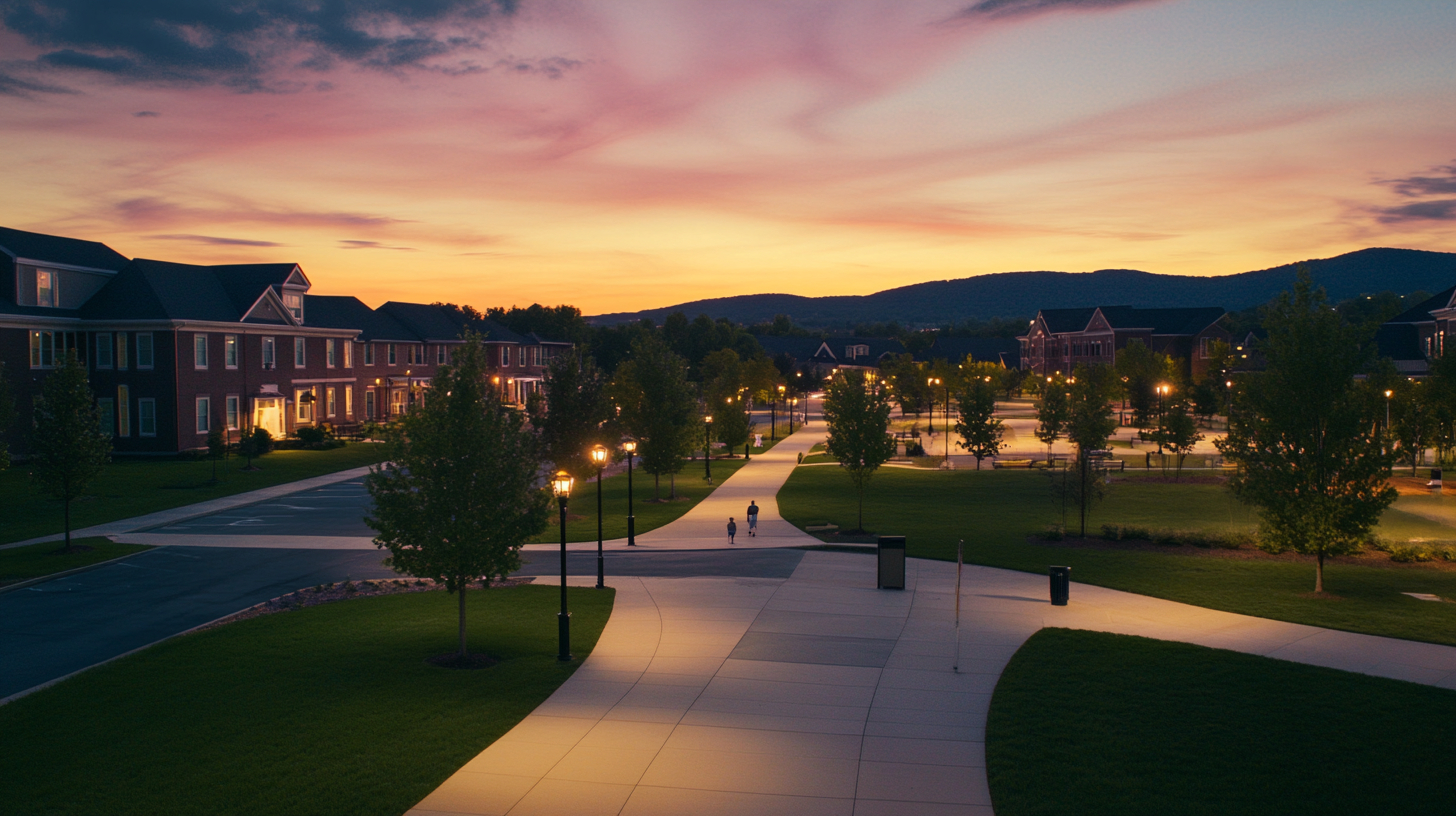You landed on this page because you typed something like Best schools in and around Dripping Springs into a search bar. Nice move. The hill country might look sleepy when you cruise down Highway 290, yet the classrooms back behind the live‑oak trees are buzzing. New families roll in, ask a neighbor or a barista where to enroll the kids, and get hit with ten different opinions before the cappuccino cools. That can feel noisy. Let’s turn the volume down and talk through the facts, the bragging rights, and the real‑life vibe you pick up only when you walk the hallways yourself.
Why families keep planting roots here
Dripping Springs sits about twenty‑five minutes west of downtown Austin. Translation: you get access to the tech jobs and the live‑music‑every‑night energy without surrendering the small‑town grin or the room to build a backyard chicken coop. People move here for the acreage, the sunsets and the wineries. They stay because the schools keep outperforming expectations. The district pulls an A rating from the Texas Education Agency year after year. That rating is not handed out like free samples at H‑E‑B. Test scores hold up. Graduation rates top ninety‑eight percent. And you still see teachers greeting students by first name in the grocery store aisle. Hard combo to beat.
Public schools locals cannot stop bragging about
Dripping Springs Independent School District, DSISD if you like acronyms, covers roughly two‑hundred square miles. Seven campuses carry the load right now, and an eighth elementary is already on the blueprint because enrollment keeps climbing.
Dripping Springs High School
- 1,900 students give or take.
- A ninety‑eight percent graduation rate.
- Average SAT around 1190, which outruns state and national averages.
- The Tiger band has marched at the UIL State finals eight times in the last decade.
- Powerhouse volleyball and soccer programs.
- Over thirty AP and dual‑credit courses on the menu.
These numbers are impressive on a screen. Walk the campus on a Friday morning and you will bump into robotics team members hauling a half‑assembled bot across the courtyard, theater kids reciting lines near the black‑box entrance, and FFA students in starched jackets prepping for a stock‑show haul. Talk about range.
Parents love the counselor‑to‑student ratio. One counselor for roughly 250 students means kids get face time when schedules, scholarships or mental‑health bumps appear. The high school also partners with Austin Community College, so juniors can knock out college algebra or English Comp before senior year even starts. That saves tuition dollars later.
Dripping Springs Middle School
Middle school can be awkward anywhere, right. Somehow this campus makes it hurt less. Test data shows reading and math scores comfortably above the state curve. An outdoor classroom in a live‑oak grove helps restless brains reset. The slam‑dunk feature: every student chooses an enrichment wheel. One quarter they might try robotics, the next quarter culinary arts. Good way to discover hidden interests without super‑early specialization.
Sycamore Springs Middle School
Opened in 2017 and still sparkling. Teachers weave tech into lessons without letting Chromebooks become babysitters. Seventh graders write Python code to light up mini circuit boards. Athletics push hard too. Cross‑country runners regularly punch tickets to the regional meet. If your kid juggles band and basketball, staff work together to keep schedules from colliding.
Four elementary options
- Cypress Springs Elementary
- Dripping Springs Elementary
- Walnut Springs Elementary
- Rooster Springs Elementary
Each one holds the same district curriculum but the culture shifts a bit. Cypress Springs leans into environmental science with a school‑garden program. Walnut Springs runs the most established dual‑language track, Spanish and English side by side starting in kindergarten. Parents rave about tiny class sizes in early grades, often below twenty kids. That gives teachers room to spot learning gaps before they widen.
Numbers do not tell the whole story
Texas assigns accountability grades, sure. You will see the coveted A on DSISD report cards. Yet the hallmarks you cannot quantify speak louder. Younger kids still line up to high‑five the varsity football captains during pep‑rallies. Seniors volunteer to read Dr. Seuss during elementary literacy week. The community builds academic achievement into its social fabric, almost like Friday night lights part two.
Private campuses and fresh alternatives worth a look
Public schools shine, but some families chase a niche approach or smaller headcount. Good news, the area offers options inside a fifteen‑minute drive.
Austin Waldorf School
Set amid cedar trees in the Oak Hill pocket of southwest Austin, about ten miles from Dripping Springs city limits. The Waldorf method keeps screens at bay, leans on handwork, storytelling, and nature immersion. Class sizes hover near twenty. Graduates head to selective colleges with a reputation for creativity and strong writing chops. If you want textbooks plus mud‑pie science, schedule a tour.
Skybridge Academy
Think microschool meets project‑based learning. Skybridge caps enrollment around one‑hundred students grades six through twelve. No bell schedule here. Students design passion projects each semester, track deliverables in Trello and present to a mixed‑age audience. Parents pay tuition roughly comparable to other Austin privates yet rave about the mentorship vibe. One mom said her introverted son started hosting podcast interviews by spring break.
Veritas Academy
Classical Christian curriculum located in southwest Austin, still inside daily commute range. Students tackle Latin in middle school and unpack Western Civilization through Socratic discussion. Athletics compete in TAPPS conferences. Families who prioritize faith formation plus college prep often land here.
Cedars Montessori School
For the three‑to‑twelve crowd. Spread across twelve wooded acres. Montessori materials line the shelves but kids also split firewood, tend goats and label the parts of a flower under a hand lens. Hard to replicate that kind of sensory toolkit in a traditional classroom.
Charters and magnet picks
- IDEA Kyle College Prep sits fifteen minutes south on Interstate 35. Free public charter. Tight structure, daily tutoring blocks and a college acceptance requirement for seniors.
- Harmony School of Innovation in southwest Austin. STEM heavy. Robotics teams consistently qualify for state.
- Ann Richards School for Young Women Leaders, a selective magnet inside Austin ISD, welcomes Dripping Springs residents who snag a lottery seat. Focus on leadership and engineering for girls grades six through twelve.
Charters do not charge tuition but they do run lotteries, so toss your name in early.
When the whole town shows up
A school cannot solo its way to greatness. Community and parents fill the gaps a budget line item never covers.
The booster clubs
Pick a sport or fine‑arts discipline. A parent‑run booster club is already raising funds for new uniforms or lighting upgrades. People sometimes joke that Dripping Springs High has Friday night lights 2.0 after the booster overhaul two years ago. Donations hit six figures in a heartbeat because local businesses know strong schools keep property values climbing.
Parent Teacher Associations
Every elementary campus keeps an active PTA. Meetings feel more like brainstorming sessions than Robert’s Rules of Order. Volunteers coordinate book fairs, art‑night potlucks, even a wildly popular chess club at Dripping Springs Elementary that drew eighty kids in its first signup window. The district supplies the building, parents supply the texture.
Service projects
Students do not just stack volunteer hours for transcripts. They partner with local nonprofits. Middle schoolers fill weekend food backpacks for neighbors on reduced‑price lunch. High school engineering students design aquaponic grow beds for the Dripping Springs food pantry. When teens invest in their hometown, they feel accountable to it and achievement follows.
Business partnerships
Tech companies in Austin sponsor hackathons and judge senior capstone pitches. A nearby equine therapy ranch offers internships to future vet students. Hill Country wineries host chemistry lab field trips. This cross‑pollination means students see classroom concepts play out in real revenue‑generating settings.
The hidden plus: mentorship culture
The community floods campuses during career‑day panels, mock interviews and college essay workshops. Ask any senior who molded their ambitions and they rattle off a laundry list of neighbors who showed up during lunch periods. That culture seeds confidence long after graduation gowns go back on the hanger.
How to pick your perfect campus vibe
Information overload can freeze decision making. Let us carve the process into bite‑sized moves.
- Map drive times. Country roads look peaceful until you try them in Monday morning fog. Punch addresses into your GPS at 7:15 a.m. and clock the commute.
- Check transfer policies. DSISD sometimes allows intra‑district transfers when capacity exists. You might live in Walnut Springs attendance zone yet fall for the garden program at Cypress Springs.
- Tour during operating hours. Online open houses feel handy, but you need to smell the cafeteria and watch hallway transitions. That energy tells the truth.
- Bring a question list. Ask about reading intervention, playground shade, choir uniforms, whatever matters to your household. Administrators appreciate families who know their priorities.
- Sit in on a PTA meeting. Even one session offers a litmus test for collaboration. You will sense whether volunteer hours flow smoothly or if leadership bottlenecks stall progress.
- Talk to students. Teen honesty cuts through polished talking points. Buy a hot chocolate for a junior and listen.
- Compare course catalogs. Public high schools share a core, yet electives and dual‑credit menus differ year to year. Private campuses often reveal signature seminars or travel programs tucked on page twelve.
- Weigh costs. Private tuition ranges from seven to twenty‑five thousand dollars yearly. Factor uniforms, field trips and extended‑day fees. Charters cost zero but can require longer commutes.
- Peek at extracurricular calendars. How many clubs meet after school. How late are rehearsals. Families juggling multiple kids and sports schedules need the logistics exposed up front.
- Trust gut instinct. You can graph test scores all night. The final call often comes down to a single intangible moment when your kid’s shoulders relax and you know they feel seen.
Ready to tour classrooms
There you have it, a ground‑level spin through the best schools in and around Dripping Springs. Academic chops, arts swagger, community horsepower, the region covers all of it. Your mission now is simple. Pull out the calendar, book campus tours, and talk to people with dirt on their boots from living here. The right school will not just educate your child. It will connect your family to a community that keeps showing up long after senior year. Time to get out there and see which front‑door welcome feels like home.













